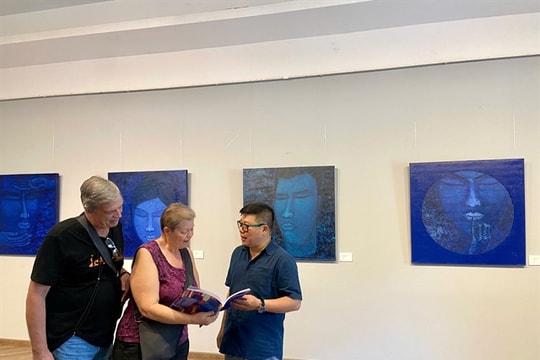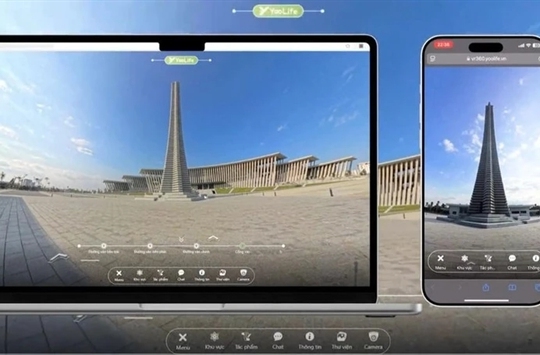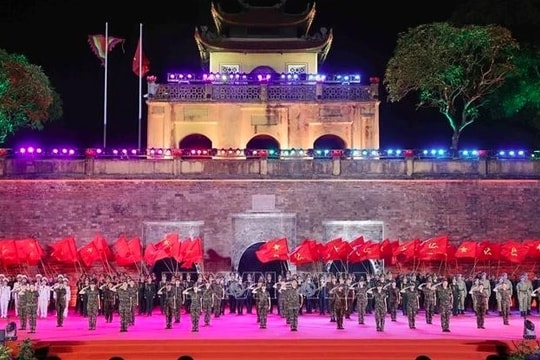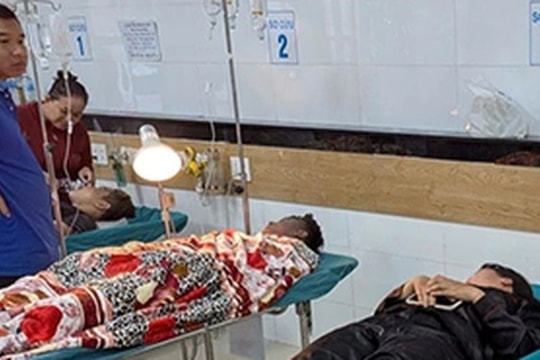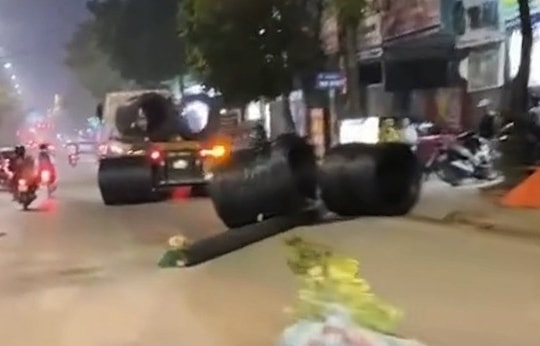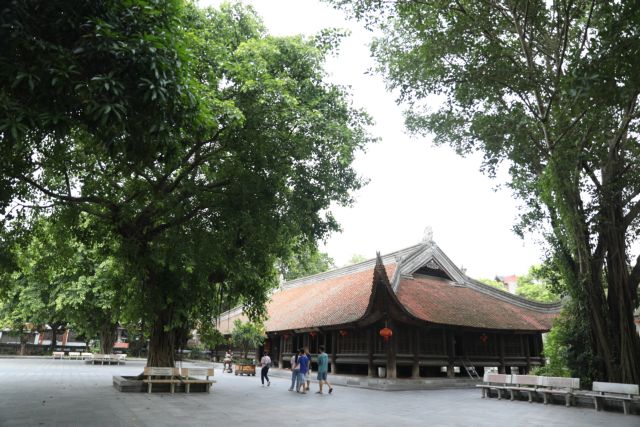 |
by Nguyễn Mỹ Hà
In the middle of extraordinarily hot summer, when you step into the shades of Đình Bảng Communal House, it feels as if several degrees had been lowered. The current communal house was built with hardwood during the Latter Lê Dynasty in the 18th century and took over 30 years to complete.
Đình Bảng House has been lauded by many as the most beautiful communal house in Việt Nam, which was built on a 丁 floor plan according to the Han script.
It's summer time and there are not many activities going on in the House as the weather gets too hot. The busiest time when the House gets filled with locals and children visiting from afar, who come back for the village's Festival on the 12th of the second lunar month.
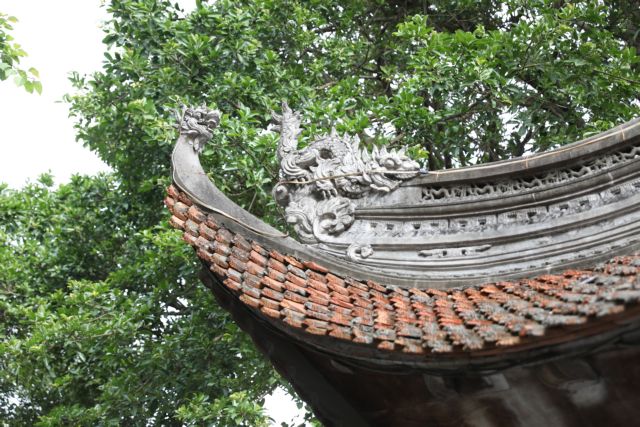 |
Đỗ Đức Thuận, 48, takes his family of four, from Hồ Chí Minh City to visit Đình Bảng. He said: "I take my family back here for a visit every summer as I am originally from Thuận Thành District here in Bắc Ninh Province." His children followed a cousin to light incense and pray to the village's gods, the House has become familiar with them over the years and they love it.
Having lived and worked in Hồ Chí Minh City for 20 years, with a job in educational services, Thuận said the trips were mostly for his children to visit his parents and relatives, but they also got to learn about the history of the Kinh Bắc land, where many beautiful pagodas and temples, craft and quan họ villages are located.
Unique and grandiose
The House has an ornate roofing structure, with four huge raising corners. The roof takes up 5.5m of the total 8-m high of the structure. Each roof corner has an elegant yet grandiose raising tip, ornately carved. The corner curves of the roof reach out farthest in all the communal houses and pagodas around Việt Nam.
 |
The House is actually a stilt house built on a raised foundation built with blue karst stones. Six lines of wooden pillars on the width and ten lines of wooden pillars on the length stand on firm blue karst stones.
Inside the House, locals congregate to pay tribute to three Gods of the village: Cao Sơn Đại Vương (the Great Land God, Thủy Bá đại vương (The Great Water God) and Bạch Lệ đại vương (God of Planting). They oversee the locals' agricultural work and harvests and once a year, in the last lunar month, Đình Bảng villagers held a traditional festival to pray for enough rain and sunshine and a bumper crop.
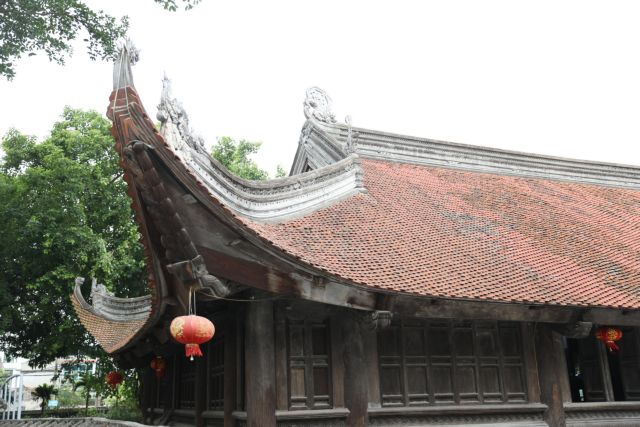 |
Names of the eight kings of the Lý Dynasty (1010-1200AD) were worshipped in the Eight Lý King Temple. In 1948, as the rise of Vietnamese patriotic movement sprung up in the country, the French had to withdraw its forces and when they were not able to hold on to occupying Bắc Ninh citadel, they destroyed the temple before they left.
All the Lý kings name placards were removed and placed on a new altar at the Communal House.
Besides the agricultural gods, six other founding fathers, who rebuilt the village in 15th century are revered, with the House becoming not just a place of pilgrimage for Bắc Ninh Province people, but also all Vietnamese.
"We love coming here everyday for work," says Nguyễn Kim An, 68, a resident of Tỉnh Cầu Ward in Đình Bảng District. "It's my seventh year, my wife and I both enjoy this work. Today we got a stipend for doing this everyday, but we started out volunteering and we loved it."
Members of the local Elderly Club, whose job is to clean the altar, light incense and keep the House clean and guide and answer questions from visitors if requested. Any donations are written down in a big book and the donors receive a recognition certificate with their names and the amount donated.
Peace at last
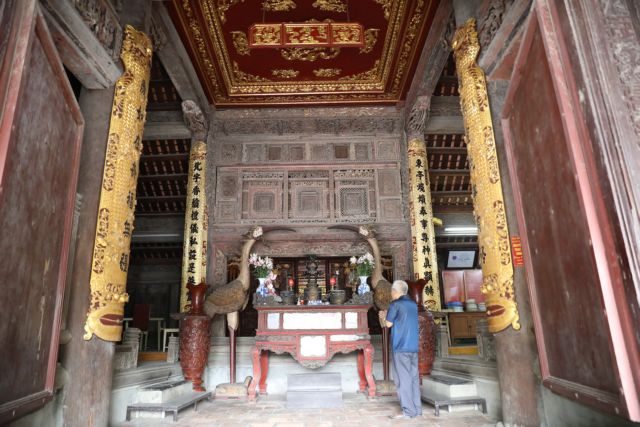 |
Mr. An says he served in the army from 1974 until 1979. He was deployed to be in Đà Lạt in 1975 and served until he de-mobbed in 1979 to go home and live as a farmer.
From 1979 until 1988, his family of five worked hard, but two more wars in the northern and southwestern borders drained most of the agricultural wealth and gains of the population.
"We grew rice on our allotted 3,600 square metres field," An said. "Our household makes over a tonne of rice each crop and we have two each year. But we as a family were still struggling."
As the country followed a strict communal co-operative format, all members had to give all their crops to the cooperative. Their daily work was converted into daily pay, which equalled a few hundreds of grammes of rice a day and the grains were not sufficient for the family to thrive.
In 1988, the country's leadership approved a new format that allotted land to farmers to cultivate through the year, they would have to give back a designated amount of rice, but they can keep the rest of the crop for the family.
It sounds simple today, but this method has become key to all the agricultural success and prosperity of Việt Nam today. Farmers love their land and fields, they work their best to raise productivity on each strip of rice field. Between 1988 until 1991, Vietnamese farmers put an end to the chronic food shortages in the country and Việt Nam became second only to Thailand in rice exports.
Today village roads in Đình Bảng are clean with transport signals, the people have prospered as they work hard, not only planting rice, but other crops including vegetables and fruit.
"Before Covid, we receive international visitors everyday. Most of them were from France," An said. "They travelled around the country, then come here as the last stop before they depart at Nội Bài International Airport."
The Communal House is huge, its ancient trees give ample shady space and local performers serenade visitors with quan họ songs to give visitors a warm feeling before they leave. The folk song 'My dear, stay, don't go' is a perfect way to remember this land.
A trip to Đình Bảng can be scheduled to visit Đông Hồ Folk Painting village, also in the province or Bút Tháp Pagoda. VNS




